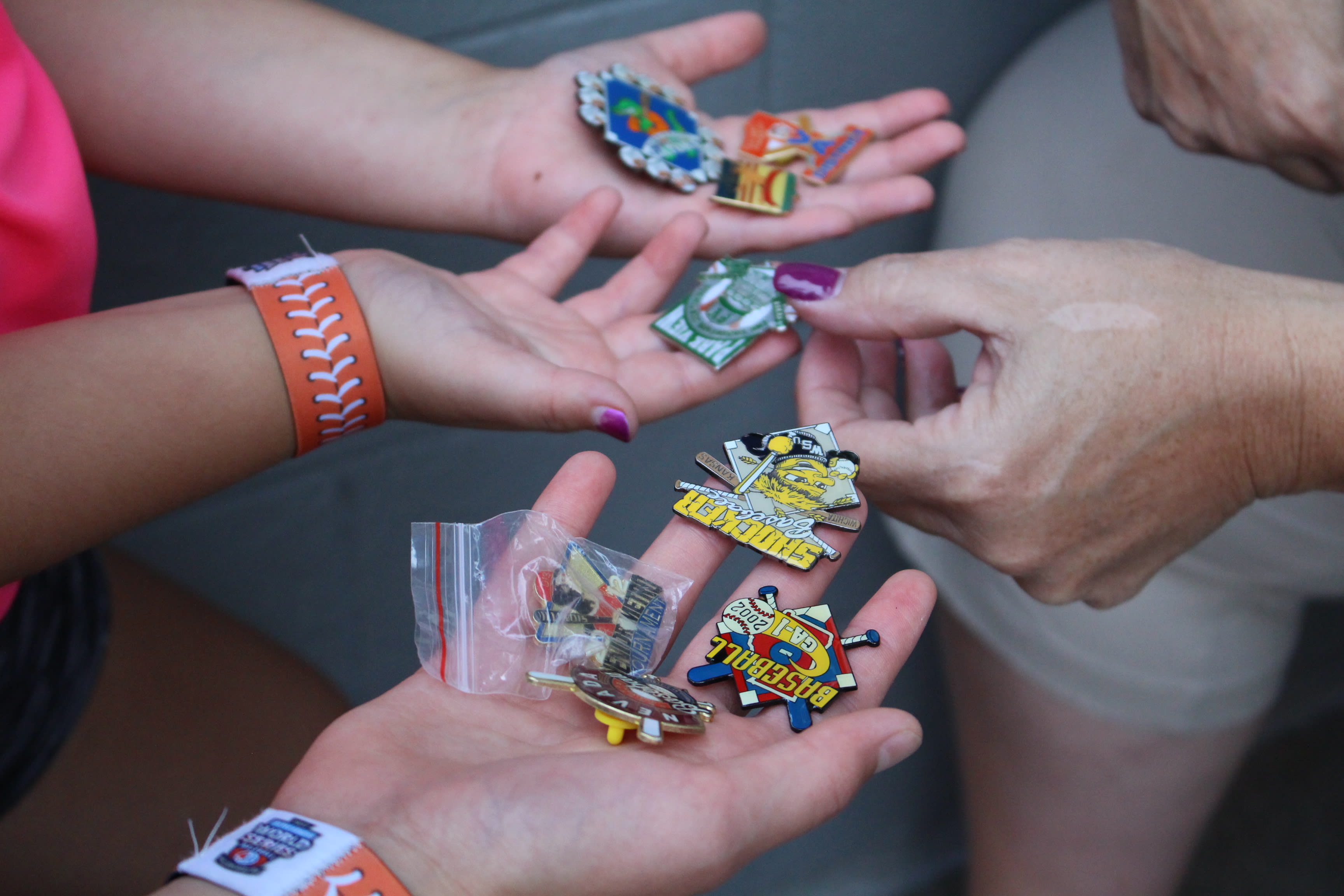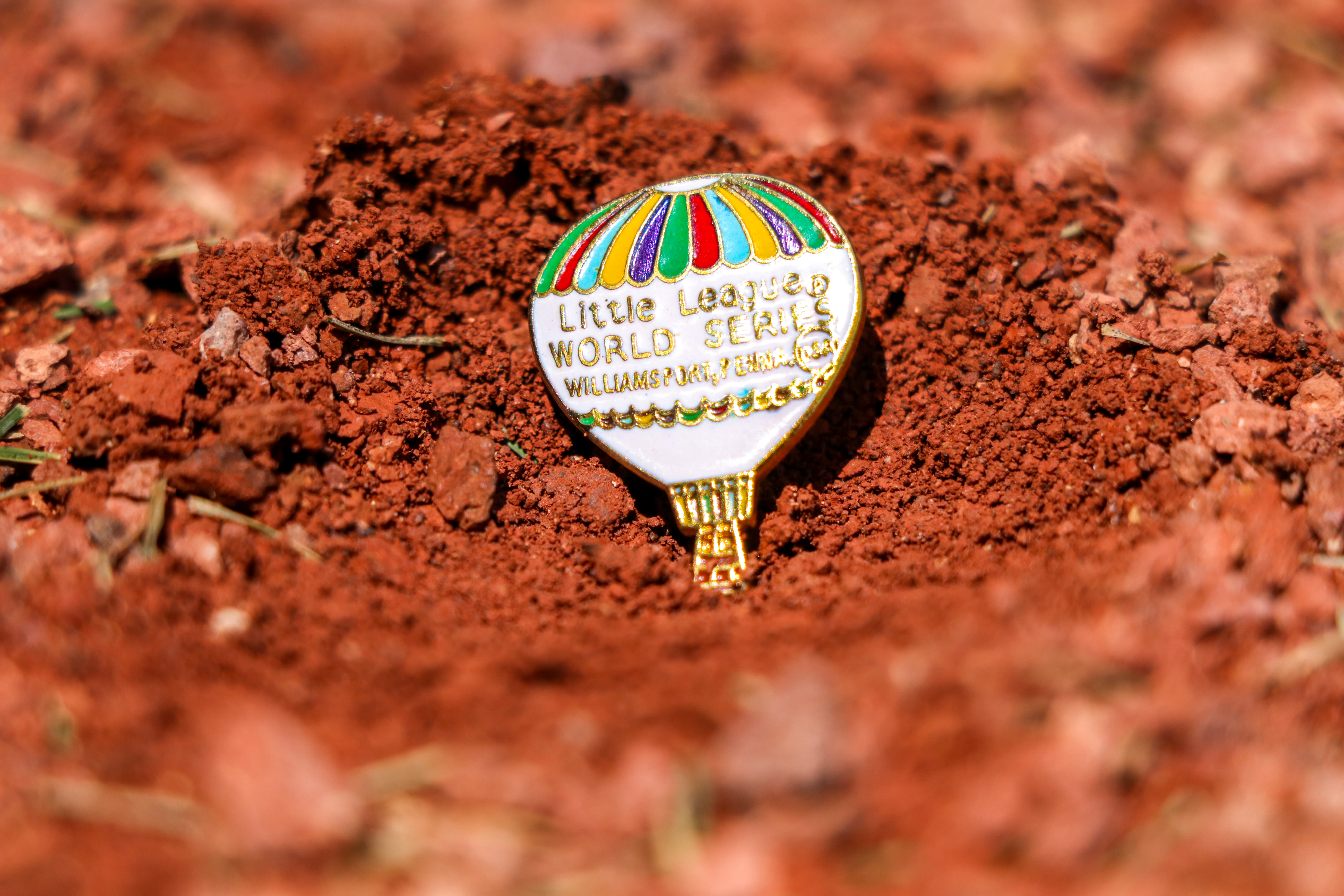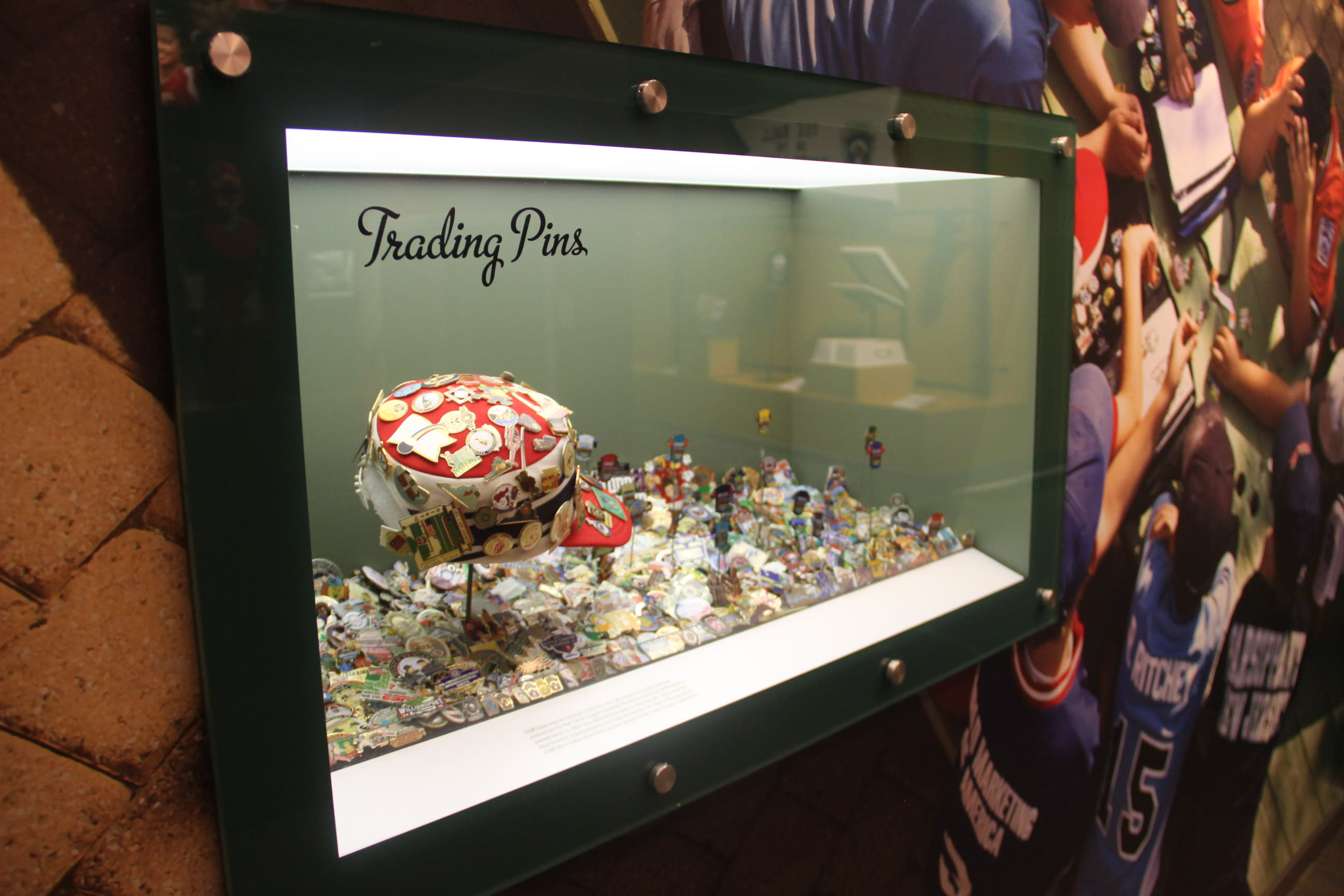
The Little League Baseball® World Series (LLBWS) is known for being the most iconic youth sporting event in the world, with hundreds of thousands of fans flocking to Williamsport, Pennsylvania, every year to watch Little Leaguers® from around the world make lifelong memories on the diamond. But when they are not packing the stands in Lamade or Volunteer Stadium, fans, players, and volunteers alike can be found all over the complex exchanging Little League’s most valuable currency: pins.
It all began in the mid-1970s, where it is widely believed that a team from Chinese Taipei brought the first pins to Williamsport to exchange with their newfound friends. Known for being a melting pot of different cultures, backgrounds, and people, the LLBWS has a longstanding tradition that sees teams from every corner of the world giving gifts that represent their community.
For players at the time, receiving another pin was nothing new as it was commonplace for young athletes since the 1950s to receive pins as they advanced through district, state, and region tournaments on their way to the LLBWS. Once the Chinese Taipei team introduced their own customized pins at the LLBWS, the Little League organization soon caught wind and started producing pins itself. Thus, the pin trading phenomenon had begun.
Little League International created its own pin for the first time in 1983. The small, simple pin was modeled after the hot air balloon that highlighted the closing ceremonies of the LLBWS during the late 1970s and is now one of the rarest pins in circulation.

While the action on the field is exciting, the pin trading festivities taking place throughout the complex can be just as competitive. Hundreds of fans, players, and volunteers scour the Little League landscape in search for their favorite pin, hoping to make new friends along the way.
“Pin trading is another way that people can get to know each other and start a conversation,” said Adam Thompson, Director of the World of Little League® Museum. “It mirrors what the Little League Baseball World Series does because when these kids come to Williamsport, they are learning about each other’s customs and cultures, but then pin trading helps facilitate that even more for the players and then the fans, too.”
Pin trading, like the LLBWS, brings together a number of different communities under the umbrella of baseball. This tradition allows cultures to become interconnected on and off the diamond as everyone joins in the excitement of producing their own pins and exchanging small cultural tokens with friends from across the world.
The beauty of pin trading is the simplicity that allows every person, whether it be umpires, ushers, or local leagues, a chance to produce hundreds of one-of-a-kind pins to put on the trading block come August. While not every team makes it to Williamsport, that does not discourage every league from creating their own pin to join in on the fun.
“It’s fun walking around and seeing people represent their area and their league,” said Mr. Thompson. “Every pin shows what makes that community special or unique.”
Pin trading is also a year-long activity, with collectors pursuing their favorite pins far outside the city limits of Williamsport, Pennsylvania. So, while fans are rushing between stadiums hoping to catch all the action on the diamond, be sure to check out the hundreds of pin collectors scattered throughout Williamsport that keep Little League alive in every corner of the world, 365 days a year.
Throughout the year, fans can also stop by the World of Little League Museum and check out the pin trading exhibit, located in the third inning of the Museum’s six-inning self-guided tour.
